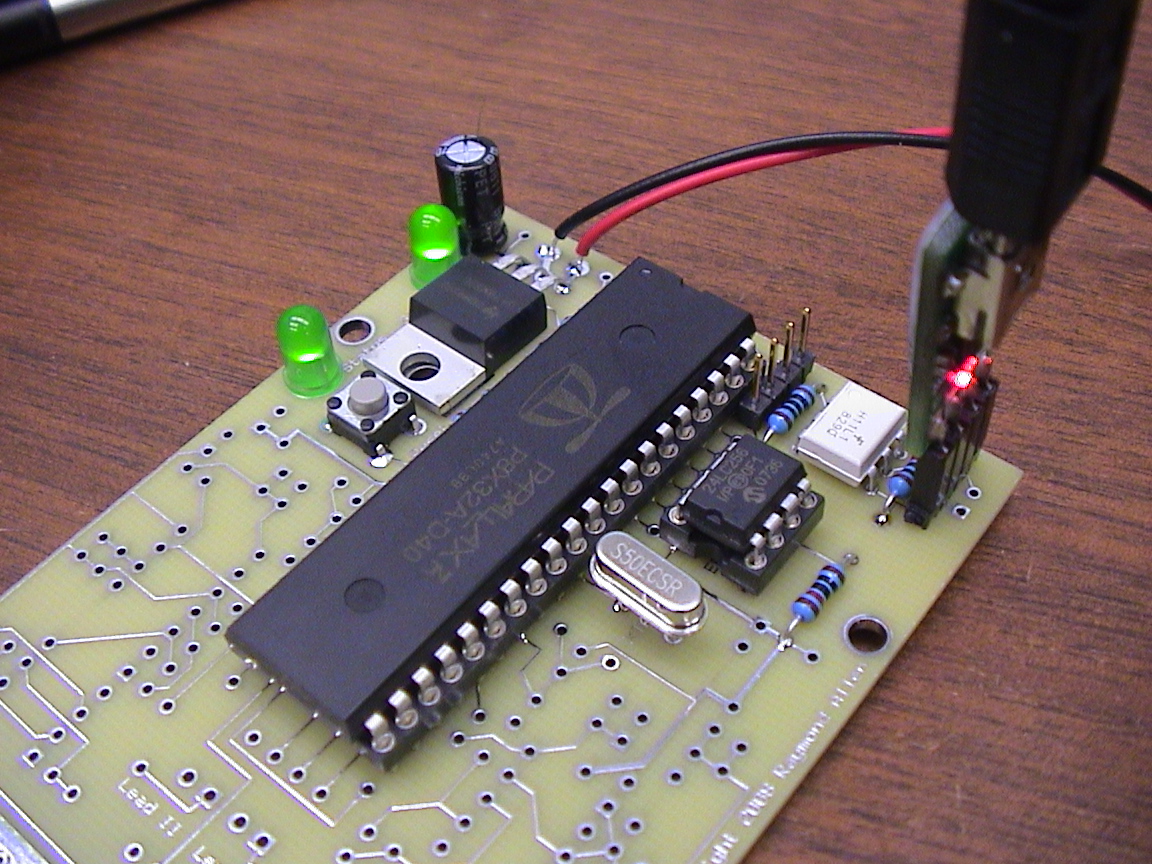Optoisolated PropPlug? ---> It works!
I'd like to send data from Prop to PC with optical isolation...· Just sending one way...
I think I can use the H11L optoisolator ('cause it's cheap).· http://www.fairchildsemi.com/ds/H1%2FH11L1-M.pdf
Only problem is that the PropPlug doesn't provide a power output to power the receive side...
But, I'm thinking that maybe I can use the TX pin for power.· I read 3.3 V there when just sitting idle.· But, I see it comes through a 150 ohm resistor.
Think I'll give it a try.
Anybody, see problems?
Here's how I might lay it out:
Update:· It works!· Here's a photo of my board pushing out 400 bytes/second over a 57600 baud optoisolated link. It didn't work at 115200 baud though...
Post Edited (Rayman) : 10/16/2008 5:44:20 PM GMT
I think I can use the H11L optoisolator ('cause it's cheap).· http://www.fairchildsemi.com/ds/H1%2FH11L1-M.pdf
Only problem is that the PropPlug doesn't provide a power output to power the receive side...
But, I'm thinking that maybe I can use the TX pin for power.· I read 3.3 V there when just sitting idle.· But, I see it comes through a 150 ohm resistor.
Think I'll give it a try.
Anybody, see problems?
Here's how I might lay it out:
Update:· It works!· Here's a photo of my board pushing out 400 bytes/second over a 57600 baud optoisolated link. It didn't work at 115200 baud though...
Post Edited (Rayman) : 10/16/2008 5:44:20 PM GMT




Comments
-Phil
▔▔▔▔▔▔▔▔▔▔▔▔▔▔▔▔▔▔▔▔▔▔▔▔
'Still some PropSTICK Kit bare PCBs left!
I'm not really clear on whether that pull-up resistor is needed or not. They call it a "load" in the datasheet. To me, that implies that it's not necessary. But, I drew a spot for it anyway.
If the Rx pin on the PropPlug is normally low, then adding a cap would definitely help.
I was thinking about just inverting the TTL logic with the Spin driver.
-Phil
▔▔▔▔▔▔▔▔▔▔▔▔▔▔▔▔▔▔▔▔▔▔▔▔
'Still some PropSTICK Kit bare PCBs left!
-Phil
▔▔▔▔▔▔▔▔▔▔▔▔▔▔▔▔▔▔▔▔▔▔▔▔
'Still some PropSTICK Kit bare PCBs left!
For opto's: I am successfully using isolation at 4800 baud with 6N139. I have 4 channels using 6N139 (receive only to the prop) that I use and have a 6N138 which I have wired but not tried. I have tried higher speeds with the 6N139's linking them back to back (this is not a real life test). Unfortunately, I did not write down my results but think 19200 worked.
From observations on the CRO, I decided my optimum circuit was 1K in series with the input diode (pin 2), with pin 3 ground. A 1K pullup on pin 6 to pin 8 with pin 8 at +5V or +3v3, pin 5 ground. Note that I am interfacing NMEA which is switching from 0v to +5v. I posted the info under a thread like NMEA interfacing about June 2008.
I updated the first post here with a photo of the board at 57600 baud...
Sorry for get too late in this.
Maybe an 6N137 could help you to get 115,2 kbps working fine.
I used it succesufully in DMX signals (it is 250Kbaud).
▔▔▔▔▔▔▔▔▔▔▔▔▔▔▔▔▔▔▔▔▔▔▔▔
Regards.
Alberto.
And, 57600 is plenty fast for what I want...
I missed the isolation issue.
Although if 57600 bps is good for your needs that's great.
▔▔▔▔▔▔▔▔▔▔▔▔▔▔▔▔▔▔▔▔▔▔▔▔
Regards.
Alberto.
I guess three optocouplers would be needed to perform remote programming via this link.